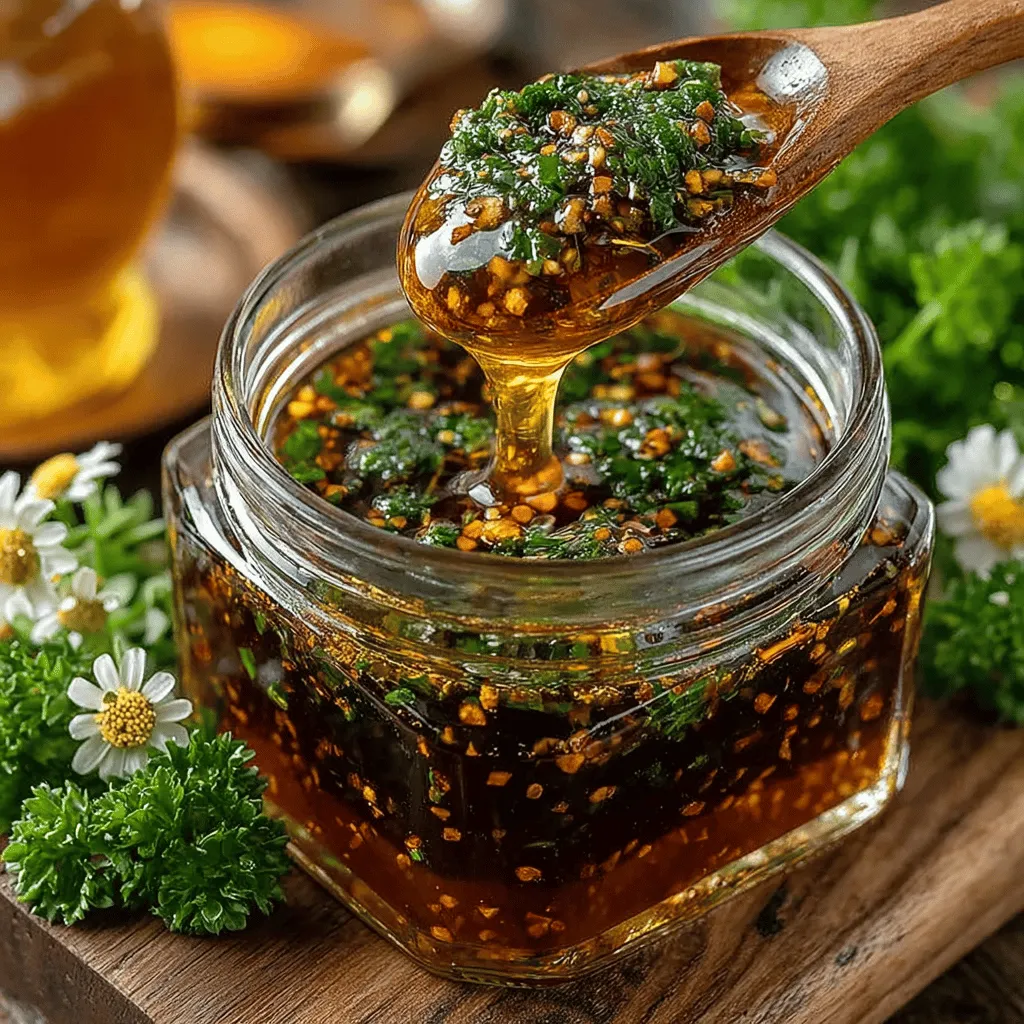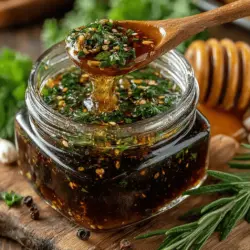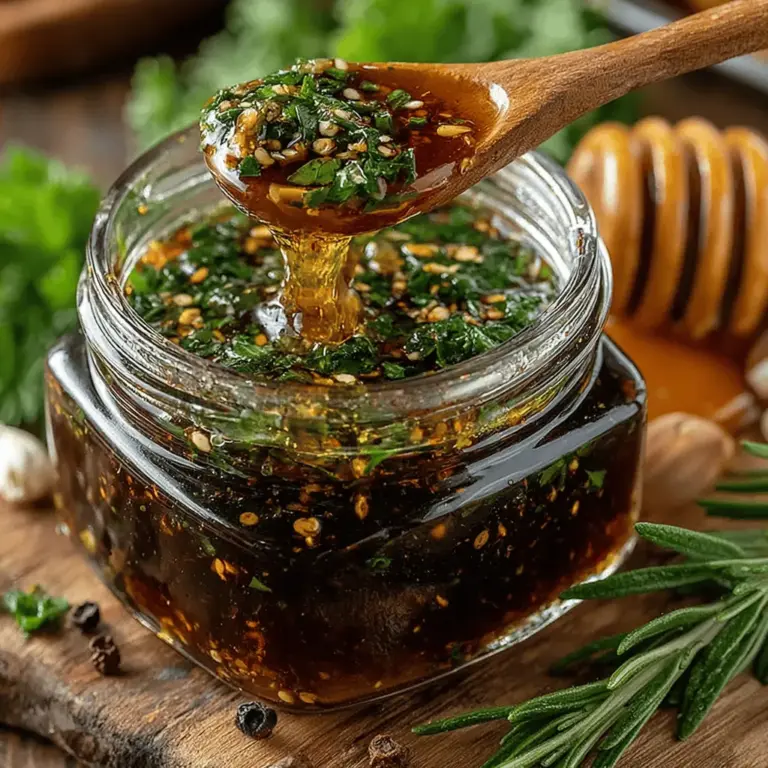Introduction to Gorgeous Balsamic Vinaigrette
The art of crafting the perfect vinaigrette can transform a simple salad into a gourmet experience that tantalizes the taste buds. Among the plethora of dressing options available, Gorgeous Balsamic Vinaigrette stands out for its rich, complex flavors and remarkable versatility. This homemade vinaigrette enhances the taste of your favorite greens while allowing you to take control of the ingredients, ensuring a healthier option devoid of preservatives and artificial flavors.
Understanding the allure of a well-made balsamic vinaigrette involves delving into its origins, its essential components, and the techniques that elevate it from ordinary to extraordinary. This article will guide you through the nuances of creating this delicious dressing, including ingredient selection, preparation techniques, and the many ways you can utilize balsamic vinaigrette in your culinary repertoire.
Understanding the Ingredients of Balsamic Vinaigrette
To create a delicious balsamic vinaigrette, one must appreciate the core components that make this dressing not only flavorful but also a healthful addition to your meals.
Exploring the Core Components
At its essence, a vinaigrette is a simple emulsion of oil and vinegar. However, the beauty of this particular recipe lies in the quality and selection of ingredients that contribute to its unique flavor profile.
The Role of Olive Oil
Extra virgin olive oil serves as the foundational base of this dressing, offering a rich, fruity flavor that complements the acidity of the balsamic vinegar. Beyond taste, this oil is packed with healthy monounsaturated fats that benefit heart health. When selecting olive oil for your vinaigrette, choose a high-quality extra virgin variety to ensure you’re getting the best flavor and health benefits.
The Importance of Balsamic Vinegar
Aged balsamic vinegar is a star player in this vinaigrette, known for its sweet, complex flavor profile. Unlike regular balsamic vinegar, which can be sharp and acidic, aged balsamic vinegar has a smoother, richer taste that enhances the overall character of the dressing. This vinegar not only adds acidity but also contributes a deep, syrupy consistency that binds the ingredients together beautifully.
Sweetness: Honey or Maple Syrup
To balance the acidity of the balsamic vinegar, a touch of sweetness is essential. You can opt for honey or maple syrup, each providing a different flavor dimension. Honey lends a floral sweetness, while maple syrup adds a warm, earthy note that can elevate the dressing further. This balance between sweet and tangy is what makes the vinaigrette so appealing, allowing it to pair well with a variety of salads and vegetables.
Flavor Enhancers: Dijon Mustard and Garlic
Adding depth to your vinaigrette is crucial, and this is where Dijon mustard and garlic come into play. Dijon mustard acts as an emulsifier, helping to blend the oil and vinegar smoothly, while also imparting a subtle tang that complements the other flavors. Fresh garlic adds an aromatic punch, providing a burst of flavor that can brighten up the vinaigrette and enhance your salad experience.
Seasoning for Perfection
To bring all these ingredients together, seasoning is key. A pinch of sea salt and a sprinkle of freshly cracked black pepper can elevate the flavors significantly, ensuring a well-balanced dressing that enhances rather than overpowers your salads. Proper seasoning is essential, as it can make the difference between a good vinaigrette and a truly exceptional one.
Optional Fresh Herbs
For those who desire an extra layer of freshness, incorporating herbs such as basil, thyme, or parsley can elevate the vinaigrette to new heights. Fresh herbs not only add visual appeal but also infuse the dressing with vibrant flavors that complement the greens beautifully. Simply chop the herbs finely before adding them to the mixture to maximize their flavor impact.
Step-by-Step Guide to Crafting Gorgeous Balsamic Vinaigrette
Now that we have explored the essential components of the Gorgeous Balsamic Vinaigrette, let’s dive into the practical steps required to create this delightful dressing.
Preparation: Gathering Your Ingredients
Before you begin, it’s crucial to have all your ingredients measured and organized. This will streamline the process and ensure that you don’t miss any component. If you’re opting to use fresh herbs, make sure they are finely chopped to release their aromatic oils effectively.
Combining the Base Ingredients
Start by selecting a mixing bowl or a mason jar for your vinaigrette preparation. In this container, combine the balsamic vinegar, Dijon mustard, and your choice of sweetener. This initial mixture forms the base of your vinaigrette, and it’s important to whisk these ingredients together thoroughly to create a harmonious blend.
Incorporating Garlic and Seasonings
Next, add the minced garlic, sea salt, and black pepper to the mixture. This step is vital for integrating the flavors right from the start, ensuring that the garlic and seasoning are evenly distributed throughout the vinaigrette. Whisk these components together until they are well blended, creating a fragrant base for your dressing.
Emulsification Process
The key to a smooth and creamy vinaigrette lies in the emulsification process. While whisking continuously, slowly drizzle in the extra virgin olive oil. The gradual addition of oil while whisking helps to create a stable emulsion, resulting in a cohesive vinaigrette that won’t separate. Continue whisking until the dressing reaches a thick, creamy consistency, ensuring all ingredients are thoroughly combined.
With these initial steps completed, you will have a delightful base for your Gorgeous Balsamic Vinaigrette, ready to elevate any salad or dish you choose to prepare. As we continue to explore this recipe, we will discuss additional variations, storage tips, and creative uses for this versatile dressing.

Adding Fresh Herbs for a Flavor Boost
Incorporating fresh herbs into your balsamic vinaigrette can elevate its flavor profile to new heights. Fresh herbs like basil, parsley, or chives not only add a vibrant color but also infuse the dressing with aromatic notes that enhance every dish it touches. If you’ve chosen to include fresh herbs, gently fold them into the vinaigrette at this stage, ensuring even distribution throughout the dressing. Aim for about two tablespoons of finely chopped fresh herbs, adjusting based on your taste preferences. Remember that some herbs are stronger than others; for instance, cilantro can dominate, while parsley offers a milder flavor.
Tasting and Adjusting the Flavor
Once your vinaigrette is mixed, the next crucial step is to taste it. This is where you can fine-tune the flavors to your liking. Using a clean spoon, take a small taste and consider the balance of flavors. Does it need a touch more sweetness? You can add an extra teaspoon of honey or maple syrup if desired. If it feels too sweet, a splash more balsamic vinegar can enhance the acidity. For saltiness, a pinch of sea salt or a grind of black pepper can help round out the flavors. This step ensures that the dressing meets your personal preference and complements the dishes you plan to serve it with.
Storage Tips for Freshness
If you’re not using your balsamic vinaigrette immediately, transfer it to an airtight jar and store it in the refrigerator. Homemade vinaigrettes can typically last for about a week when stored properly. Before each use, remember to shake well, as the ingredients may separate over time. If you notice any solidifying from the olive oil (which can happen when it’s cold), allow it to sit at room temperature for a few minutes before shaking again. This will ensure that your dressing remains smooth and flavorful.
Versatile Uses of Balsamic Vinaigrette in Your Kitchen
Salad Dressings: Elevate Your Greens
The most obvious application for your gorgeous balsamic vinaigrette is as a salad dressing. It beautifully pairs with mixed greens, roasted vegetables, or even grain-based salads. Drizzle it over a classic Caesar salad for a twist, or mix it into a hearty quinoa salad with roasted butternut squash for a delightful contrast of flavors. The acidity of the balsamic vinaigrette balances the freshness of the greens, making every bite refreshing and satisfying.
Marinade for Proteins
Balsamic vinaigrette isn’t just for salads; it can also double as a marinade for proteins. Whether you’re grilling chicken, fish, or tofu, marinating your protein in balsamic vinaigrette infuses it with a robust flavor that can elevate even the simplest meal. Simply marinate your protein of choice in the vinaigrette for at least 30 minutes (or up to a few hours for more intense flavor) before cooking. This technique ensures your meal is juicy and packed with flavor.
Drizzle for Roasted Vegetables
Enhancing roasted vegetables with a splash of balsamic vinaigrette can transform them into a gourmet side dish. After roasting vegetables like carrots, Brussels sprouts, or zucchini, simply drizzle the vinaigrette over the top before serving. The acidity of the vinaigrette will enhance their natural sweetness and add a delicious tang that makes these vegetables irresistibly good.
Finishing Touch for Grain Bowls
For those who enjoy grain bowls or Buddha bowls, balsamic vinaigrette is a perfect finishing touch. Use it to dress your bowl, tying together the various elements such as grains, roasted vegetables, and proteins. The vinaigrette adds a layer of flavor that can elevate the entire meal, making it cohesive and delicious. Try it on a brown rice bowl with roasted chickpeas and steamed broccoli for a wholesome, nutritious dinner.
Nutritional Benefits of Homemade Balsamic Vinaigrette
Healthier Choice Compared to Store-Bought Options
One of the primary benefits of making your balsamic vinaigrette at home is that it is a healthier alternative to store-bought options. Many commercial dressings contain preservatives and artificial ingredients that can detract from their nutritional value. By making your own, you control what goes into your dressing, ensuring it is fresh and free from unnecessary additives.
Heart-Healthy Fats from Olive Oil
The extra virgin olive oil used in this recipe is rich in monounsaturated fats, which can help lower bad cholesterol levels and reduce the risk of heart disease. Incorporating healthy fats into your diet is essential, and using olive oil as a base for your vinaigrette is a delicious way to do so. Plus, it adds a rich flavor that complements the balsamic vinegar perfectly.
Antioxidant Properties of Balsamic Vinegar
Balsamic vinegar itself contains antioxidants, which can contribute to overall health and wellness by fighting oxidative stress in the body. These antioxidants can also help reduce inflammation and support heart health. By including balsamic vinegar in your diet through homemade vinaigrette, you’re not only enhancing your meals but also boosting your health.
Natural Sweeteners
Opting for honey or maple syrup as sweeteners allows you to control the sweetness while benefiting from the natural properties of these ingredients. Unlike refined sugars, natural sweeteners provide additional nutrients and flavors that enhance your vinaigrette without compromising your health. This choice makes your dressing not only delicious but also a better option for those looking to maintain a healthy diet.
Conclusion: The Joy of Homemade Balsamic Vinaigrette
Creating a gorgeous balsamic vinaigrette at home is not just about making a salad dressing; it’s about enhancing your culinary experience and embracing the freshness of wholesome ingredients. This simple yet versatile dressing can be used in countless ways, from salads to marinades and beyond, making it a staple in your kitchen. By opting for homemade, you take control of the flavors and health benefits, ensuring every drop is as delicious as it is nourishing.
So, the next time you’re looking to elevate your meal, remember this balsamic vinaigrette recipe. With its rich flavors and versatility, it’s bound to become a beloved addition to your cooking repertoire. Enjoy experimenting with different ingredients and uses, and savor the satisfaction of creating something wonderful from scratch. Your taste buds—and your body—will thank you!

